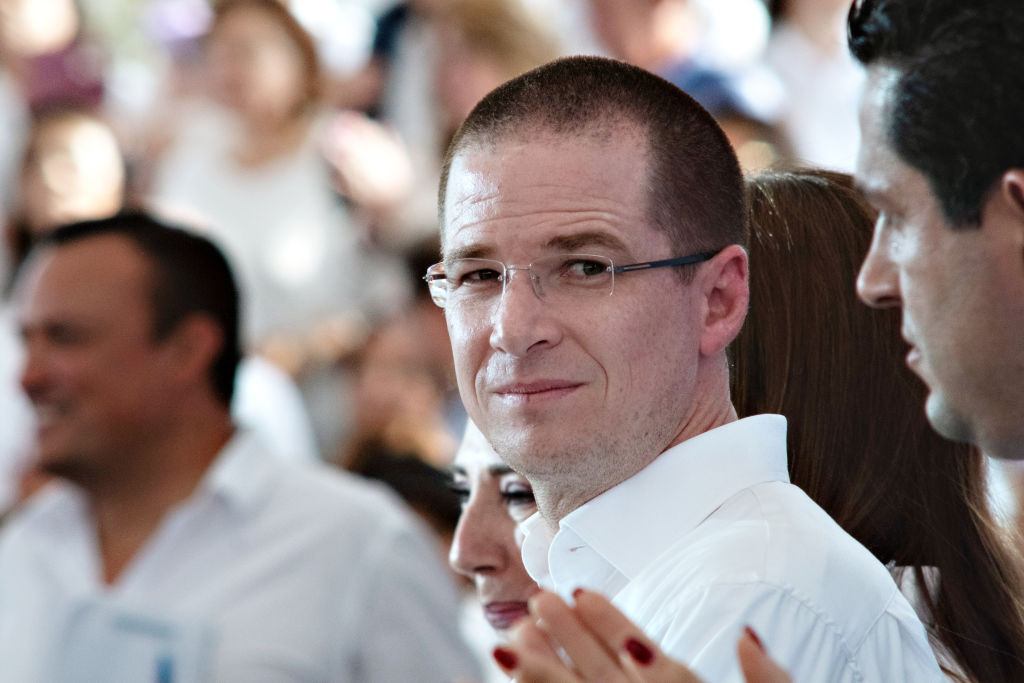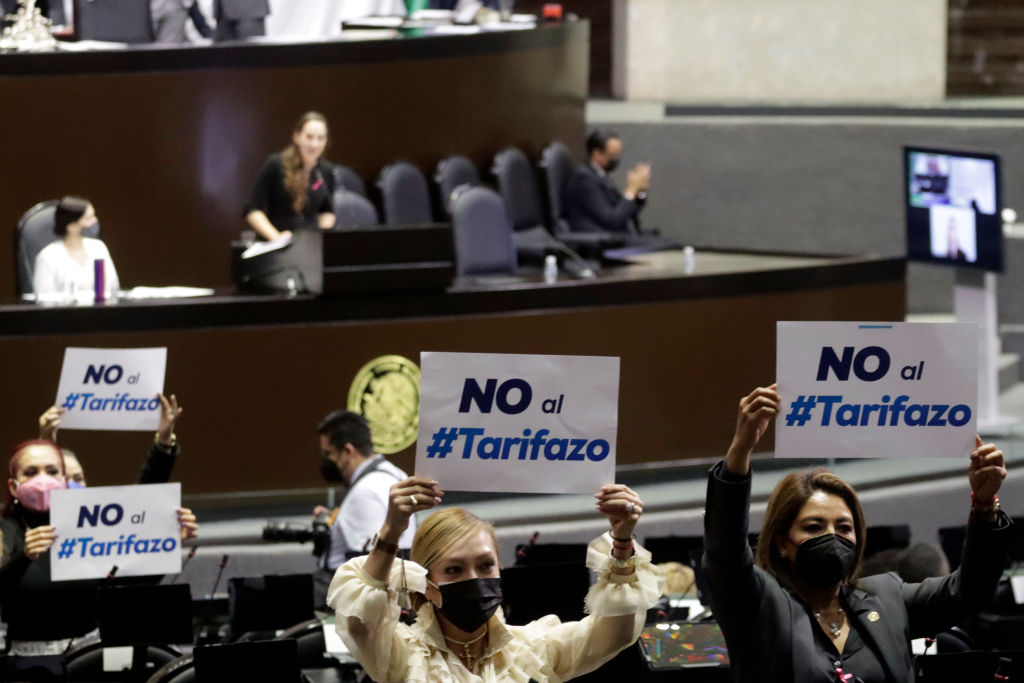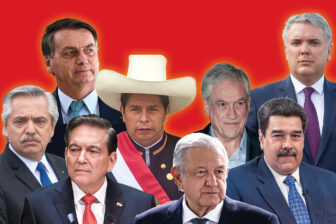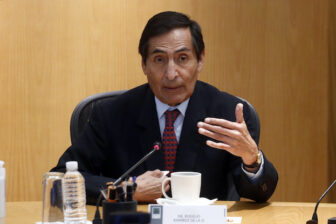Can anyone beat the lopezobradorista juggernaut? With just under three years left in his nonrenewable six-year presidential term, Mexico’s Andrés Manuel López Obrador (AMLO) maintains a stranglehold on Mexican politics. The economy is sputtering, homicide rates are stuck at the highest level on record – but the president’s approval has been holding steady at just above 60%. Meanwhile, the opposition is in disarray.
What will it take for AMLO’s rivals to get their act together?
One obstacle is the fact that the president’s straight-talking, anti-establishment stance continues to prove a winner with large swathes of the Mexican public. The 67-year-old has a highly attuned sense of what figures to deride as self-serving elites. The latest targets are professors at UNAM, Mexico’s elite public university (and the president’s own alma mater). Others include newspaper columnists, businessmen, and, especially, the parties that governed Mexico until 2018 and now make up the opposition coalition: the PRI, PAN and PRD.
That strategy is still working. While AMLO’s governing coalition lost its supermajority in Congress in June’s midterm elections, it kept hold of a 277-seat majority in the 500-seat lower house, and MORENA, AMLO’s party, won 11 of the 15 governorships up for grabs. The PRI, the traditionally dominant centrist party, lost all eight governor’s chairs it was defending.
The opposition can boast few high-profile figures able to articulate a concise anti-government message to a large audience. One of the few who can is Ricardo Anaya, the party’s candidate in 2018. Anaya enjoys high national name recognition and can attack the government on specific issues and reach a wide audience. On social media, he has criticized government policies, like a planned energy sector reform that would give the state utility a 54% share of the power market. In one video, Anaya compares AMLO’s desire for a “monopoly” in the energy market to “communist countries” like Cuba and North Korea.
Still, Anaya has significant vulnerabilities as a spokesman, especially on the issue of energy. He lost to AMLO in 2018 by a wide margin, only winning the state of Guanajuato, in the PAN’s traditional heartland. But much worse is that he has left Mexico for New York City as he faces accusations from the Mexican attorney general’s office that he took a bribe of 6.8 million pesos. The supposed bribe, according to the testimony of disgraced Pemex executive Emilio Lozoya, was for Anaya’s vote in favor of an earlier energy reform under Peña Nieto, which had the effect of opening the market to private investment. There are other potential opposition leaders with less baggage — like Jalisco governor Enrique Alfaro Ramírez, of the new center-left Citizens’ Movement party — but none with Anaya’s national stature.
Public prosecutors are seeking to have Anaya sent to prison before he stands trial, while he maintains his innocence, telling the Wall Street Journal that AMLO “is vengeful, and he wants to destroy me.” On November 8, his virtual hearing was postponed again to January, when he must appear in person in Mexico City. Whether he is sent to prison or whether he beats the charges, Anaya has a chance to become a rallying figure for the opposition, but only if he can make a convincing case to voters that he is innocent, analysts told AQ. For the opposition, reputation may come before all else. “You need a messenger that has credibility,” said Carlos Bravo Regidor, a professor at Mexico City’s Center for Economic Research and Teaching. “It won’t matter what their message is if they cannot win the Mexican people’s trust again.”

The tack of Anaya’s criticism of the energy reform — defending the free market and denigrating statism as “communism” — also presents some messaging questions for the opposition. Should they criticize AMLO for spending too much, or for spending too little? The president and his record present opportunities for both. Mexico’s fiscal response to the pandemic was among the lowest in the region, totaling just 1.1% of GDP in 2020, after AMLO stuck to his promise to govern with “republican austerity” (while labeling opponents “neoliberals”). But expansion of state presence in energy and the government’s lavish spending on national oil company Pemex, which continues to post large losses, is an easy target for criticism from budget hawks.
The pressing issue of security seems to present a more straightforward opportunity for criticism, but the opposition has so far failed to capitalize on this issue too. AMLO campaigned on a softer-on-crime attitude summed up by the tagline abrazos, no balazos (“hugs, not bullets”). Since he took office, crime levels have stopped their gradual increase, but they have stabilized at the highest levels on record: 29 homicides per 100,000. So far the government has not paid much of a price, but if the situation does not improve in states like Sinaloa, a center of the drug trade which has just elected a MORENA-affiliated governor, voters may take note. Still, the opposition “hasn’t been able to send a clear message of how they will do it better,” said Cecilia Farfán, an expert on security at UC San Diego’s Center for U.S.–Mexican Studies.
Beyond specific issues, there are broad tactical questions the opposition must answer. Should it seek to emulate AMLO’s politics of denunciation, or to seek victory through a more placid approach? A recent dust-up illustrated the contours of the choice, involving Claudio X. González, the founder of nonprofit Mexicans Against Corruption and the most prominent opposition figure from outside the ranks of the traditional parties. Along with another businessman named Gustavo de Hoyos, González is seeking to spearhead a joint campaign for the presidency in 2024. The Sí por Mexico coalition proposes to join the PAN, PRI and PRD with the Movimiento Ciudadano, a newer center-left party.
González wrote on Twitter that it was important to “take note of those who, through action or omission, assisted the actions and deeds of those who harmed Mexico” under AMLO’s government. Fairly mild, as far as “us versus them” rhetoric goes — but figures associated with the government quickly fought fire with fire. “Put me on the list” trended as a Twitter hashtag. Mexico City Mayor and close AMLO ally Claudia Sheinbaum called the tweet’s position “fascist.”
Some observers who are critical of the government saw González’s tweet as indicative of a mistaken political path. “A better opposition should be inclusive, not castigating,” wrote Viridiana Rios.
An alternative path for the opposition in 2024 may be to emulate Biden’s 2020 run, taking a calmer, more consensus-oriented tack. A familiar face, with low rejection rates, who promises competent government and a relief from a politics of denunciation, might do the trick.
Which groups should the opposition focus most intently on? It will be hard to shake MORENA’s hold on Mexico’s poor. Though AMLO has swapped the national health service with an alternative that covers 18 million fewer people, he has also introduced a handful of semimonthly stipends of about 2,500 pesos (about $120) each for the poor, elderly and students — under the “for well-being” tagline (para el bienestar). Receiving these checks from programs closely associated with the president has entrenched many poor Mexicans’ support for AMLO, especially in the countryside and the south.
More easily wooed are more urban populations in the center and north of the country. The opposition recently struck a blow at AMLO’s dominance in the capital, his longtime stronghold, by taking nine boroughs out of 16 in 2021 municipal elections. Attracting voters beyond the base of the traditional parties, which can count on only about a combined 20% of the electorate, will be crucial.
The opposition’s electoral prospects will soon become clearer. A vote on AMLO’s electrical reform, postponed now to April, will test the united opposition front. A supermajority is needed to pass the bill, meaning significant support from opposition parties is needed. The PAN has committed to voting against it, while the PRI has yet to announce how it will vote. Even if the bill fails, a split vote by the opposition would send a signal that lopezobradorismo can divide and conquer its opponents.
In 2022, six governorships are up for election, all currently held by opposition parties who won the seats before the MORENA tidal wave in 2018. If MORENA can sweep up most of these, things will continue to look grim for the opposition. But if the old parties can hold on to more than a couple governorships, a stronger showing in 2024 could start to look more likely.









